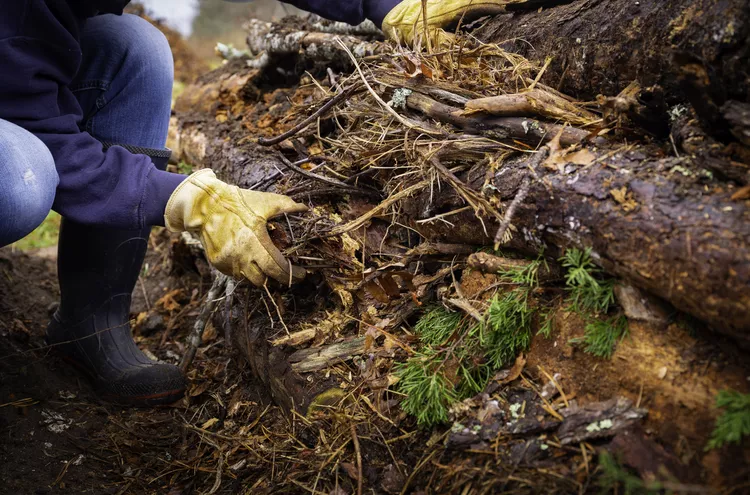Is your dog scared of children? Dogs and kids make a great combination under the right circumstances and often form lifelong bonds. However, when a dog is afraid of children, it's not always safe to bring them together.
If you're facing this problem with your dog, it might comfort you to know it's fairly common for dogs to be wary of kids (and vice versa), and thankfully, there are ways you can address your pup's fears to help prevent confrontations.
Why Do Dogs Fear Children?
There are two major reasons why dogs may develop a fear of children.
- A lack of early socialization: Dogs who aren't exposed to children as puppies may become fearful when they meet them later in life. When they encounter children for the first time as adult dogs, they may be extremely frightened by the unfamiliar size, smells, noises, and movements of children.
- The aftermath of a negative experience: Dogs may also develop a fear of children after a painful or unsettling interaction. Young children often tend to pull tails, grab handfuls of fur, steal toys, and even poke eyes. Some dogs are tolerant of children's poking and prodding. Other dogs may develop a fear of children after only one bad experience.
Next Steps
Because it's unlikely a dog will go through its entire life without ever meeting a child, you must work on managing your dog's fear. This is not only for the sake of your dog; it is also important to prevent dog bites and other injuries to children.
Fortunately, there are several things you can do to minimize your dog's fear of children.
Socialize Early
If you have just brought home a puppy, start socializing it with children right away. Puppies go through a peak socialization period at around 8 to 12 weeks of age, during which time they should be exposed to as many different situations as possible. Keep in mind that all interactions should be supervised and kept as positive, upbeat, and calm as possible. Working on socialization now may save you lots of time, effort, and anguish later on.
Many people have pets before they have children. Then they're surprised when their dogs growl or snap at the new infant or toddler. This can be a heartbreaking situation for the dog owner and the dog, but the key to preventing the problem is early and frequent socialization.
Take Precautions
Never leave your dog unsupervised with children. This should be the rule for all dogs but especially for a dog who's afraid of children or hasn't encountered them in the past. Prematurely leaving them alone to play puts both the dog and children in a bad position that can result in even greater fear in the dog or an injury to the children. When a fearful dog (or a new dog) is around children, don't take your eyes off them for a second, and be ready to separate them at the first sign that the dog is becoming uncomfortable.
Don't force your dog to make friends with a child. Forcing your dog to stand still while a child approaches it or pets it is asking for trouble. If a fearful dog is pushed too far beyond its comfort zone, aggression can be the result, particularly if it is unable to leave the stressful situation. Don't put your dog in a position where it feels forced to defend itself.
Provide a Safe Space
All dogs need a quiet, safe space where they can be left alone. If your dog is afraid of children, make sure it has a safe, quiet spot it can get to when children are around but that the children cannot access. If your dog is crate-trained, a crate makes a perfect hiding spot. Don't allow children anywhere near your dog's safe area.
Establish Rules
If you have children and a fearful dog living in the same household, your children must have rules to follow. They should never be allowed to interact with the dog unsupervised, and they should know to never try to take the dog's toys or approach the dog while it's eating or sleeping.
It's also important that you spend time teaching your children the right way to interact with dogs. This includes how to touch your dog with gentle petting rather than poking, prodding, and pulling.
Train Your Dog
Desensitization is the process of gradually increasing your dog's interactions with children to make it more comfortable with them. Because a fearful dog can become aggressive, it's important to handle desensitization carefully.
For example, you can start by tossing your dog a few treats when it sees children from a distance and remains relaxed. Very slowly over several days, weeks, or months (depending on the severity of the fear), you can decrease the distance between your dog and children as long as no signs of stress appear, all the while handing out treats and praise. Never punish a dog who is reacting out of fear as that only confirms to the dog that it had a good reason to be afraid.
Find a veterinary behaviorist or reputable dog trainer with experience in dealing with fearful dogs, and make sure they use only positive reinforcement. Because dogs who are afraid of children run the risk of biting, it is often beneficial to call in a professional. A trainer or behaviorist can help you implement a desensitization program and get results more quickly and safely than you might otherwise.
Be Patient
These things can take a long time, and your dog may never fully accept children. However, with patience and perseverance, you should be able to minimize your fluffy friend's fear and prevent dog bites.




















